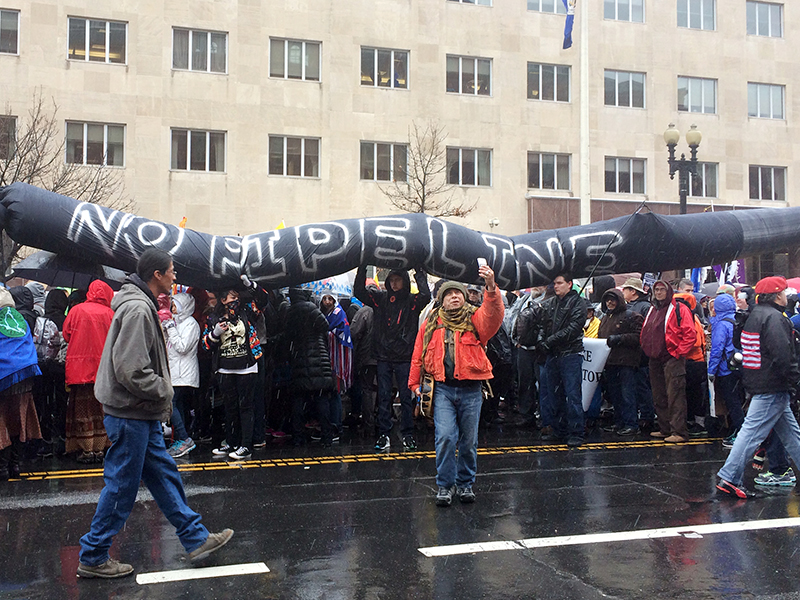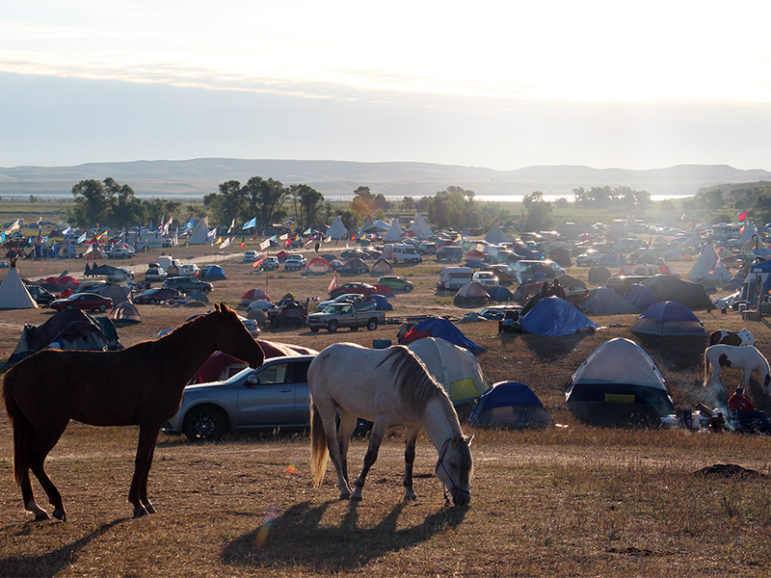(RNS) — Last week (March 25), more than three years after the Standing Rock Sioux drew the nation’s attention to the hazards of the Dakota Access Pipeline to the tribe’s land, a federal judge ruled that a permit allowing the pipeline to cross the Missouri River a half-mile upstream from the Standing Rock reservation’s boundary was illegal. The judge ordered the Army Corps of Engineers to conduct a full-blown environmental impact statement.
In some respects, the ruling came several years too late: Oil began flowing through the completed pipeline in June of 2017. But last week’s ruling breathes new life into Native American efforts to defend sacred lands and waters throughout the country, even as the Trump administration tries to gut regulations designed to protect the environment and culturally significant places.
Until now, Standing Rock had lost four of five rounds of litigation. A partial victory in May 2017 required the Corps to revisit its preliminary assessment that the pipeline presented “no significant impact” on the “quality of the human environment” but stopped short of revoking the permit and halting the flow of oil. Last week, the judge in the case said he would decide whether to halt oil during the ordered environmental review after the parties presented arguments.
RELATED: Standing Rock Sioux celebrate ‘significant legal win’ in DAPL fight
Ironically, what made last week’s victory possible was a 2019 appeals court ruling involving the integrity of historical sites near Jamestown, Virginia, where English settlers first brought displacement and disease to Native Americans in 1607.
In that case, the D.C. Circuit Court of Appeals ordered the Corps to revoke a fast-tracked permit and undertake a full environmental impact statement for a power line that was to cross the James River, “from whose waters Captain John Smith explored the New World.”

Indigenous people and their supporters participate in a protest march opposing the Dakota Access and Keystone XL pipelines, in Washington, D.C., on March 10, 2017. RNS photo by Lilly Fowler
That new precedent emboldened the judge in the pipeline case, James E. Boasberg, to hold that the Corps must now undertake the environmental impact statement process that Standing Rock had asked for in his court for more than three years.
Evidently it took a power line to cross waters sacred to the memory of American colonialism to finally tarnish the legality, much less the wisdom, of a pipeline’s crossing of a river sacred to the Lakota and other Native nations since time immemorial.
This curious logic notwithstanding, the court victory will likely invigorate spirited efforts by Native people to protect sacred lands and waters.
In Montana the Fort Belknap and Rosebud Sioux tribes continue their court fight against Trump administration approval of the Keystone XL Pipeline. Native Hawaiians are encamped in efforts to block the expansion of a massive telescope on the summit of sacred Mauna Kea. This summer, a federal court will rule on Trump’s plan to reduce Utah’s Bears Ears National Monument by 85% in order to open land to uranium, oil and gas exploration.
Like the other cases, Bears Ears is as much an issue of sacred land protection as an environmental issue; Bears Ears has rightfully been called the first Native American national monument. Established by President Barack Obama’s 2017 proclamation, Bears Ears was planned by a coalition of Navajo, Hopi, Zuni, Ute and Ute Mountain Ute nations to safeguard their sacred lands and ancestral knowledge as a national treasure, collaboratively managing the monument with the U.S.
The final outcome for the Dakota Access Pipeline remains uncertain. Unknown is whether the consideration of alternatives required in a full-blown environmental impact statement will ultimately reroute the pipeline so it doesn’t endanger the water or desecrate places sacred to the Standing Rock Sioux Tribe and other downstream Native nations. And oil may or may not be allowed to continue to flow in the meantime.
But last week’s decision brings more than the vindication Standing Rock deserves. It brings oxygen to tireless indigenous efforts to defend the sacred in the courts and on the ground.
(Michael D. McNally, a professor of religious studies at Carleton College, is author of “Defend the Sacred: Native American Religious Freedom Beyond the First Amendment.” The views expressed in this commentary do not necessarily reflect those of Religion News Service.)





